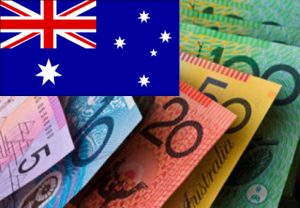Australian Dollar suffers from jobs data
18 November 2016 by News DeskAustralian Dollar demand was weighed down even further by Thursday’s October Australian unemployment report which was disappointing.
 Australian Dollar was impacted by the jobs data that showed employment only improved by 9,800 on the month, letting down hopes of a 16k increase.
Australian Dollar was impacted by the jobs data that showed employment only improved by 9,800 on the month, letting down hopes of a 16k increase.
The participation rate also failed to increase to 64.6%, remaining at a disappointing 64.4%, according to currency specialists TorFX
The unemployment rate surprisingly held at 5.6%, but these other factors weighed on the Australian Dollar throughout the day.
New Zealand Dollar (NZD) – The Pound to New Zealand Dollar exchange rate saw similar movement to GBP/AUD on Thursday as risk-correlated currencies began to weaken.
While traders briefly bought the ‘Kiwi’ up from its lows after it performed poorly for most of the week on natural disaster concerns, this recovery attempt was not enough to stave off the market-wide risk-off movement that followed hawkish comments from Federal Reserve Chairwoman Janet Yellen.
GBP/NZD returned to near the week’s opening levels by Friday morning, and could continue advancing throughout the day as New Zealand’s Q3 retail sales print came in with an underwhelming 0.9%.
Australian Dollar suffers from jobs data
Pound Sterling (GBP) – Despite seeing mixed trade earlier on Thursday, Sterling ended the day slightly stronger thanks to Britain’s impressive October retail sales scores.
October saw the best month for UK retail sales since 2002, largely due to Halloween festivities, the sudden cold weather spurring winter clothes shopping and Sterling’s value attracting large numbers of tourists. The month-on-month sales figure printed at a strong 2.0%, improving from 0.1% in September. Meanwhile, the yearly score improved from 4.2% to an especially impressive 7.4%.
While some analysts warned this uptrend in retail sales would not last, which initially weighed on Sterling demand, the British currency eventually benefited strongly from this 14-year-high in retail sales.
US Dollar (USD) – While the Pound began the day firmly against the US Dollar, it was unable to sustain any advances against the ‘Greenback’ by Friday morning and continued to trend near the week’s worst levels.
Decent US ecostats, as well as hawkish comments from Federal Reserve Chairwoman Janet Yellen during her testimony to Congress, kept the US Dollar strong on Thursday. Yellen stated that leaving rates low too long could be harmful, indicating that she too was ready to hike interest rates in December. She also stated that she expected gradual interest rate rises and intended to fulfil her full term as Chair despite previous criticism from President-elect Donald Trump.
US Consumer Prices printed at 1.6% year-on-year, as expected, while this week’s jobless claims and housing start reports also impressed. Fed rate hike bets reached over 90% earlier this week and fresh data continues to support that.
Euro (EUR) – The Pound to Euro exchange rate reached its highest levels in two months during Thursday trade and advanced by over half a cent, reaching new key support levels in the process. This was largely due to sturdiness in the Pound, but a weak Euro made GBP/EUR advances easier.
Eurozone data published on Thursday was mixed. While October’s final year-on-year Consumer Price Index (CPI) printed at a solid 0.5%, up from the 0.4% preliminary figure. October’s monthly inflation score hit a lower-than-expected 0.2%. This underwhelming monthly score, as well as ongoing concerns about rising populism in the Eurozone and the strength of the US Dollar, kept the shared currency weak on Thursday and Friday morning.
Canadian Dollar (CAD) – The Pound to Canadian Dollar exchange rate was finally able to recover slightly on Thursday after slumping for most of the week. The Pound was assisted by a strong UK retail sales report, while slipping risk sentiment limited the Canadian Dollar’s advances.
While ongoing hopes that OPEC member nations would agree to oil output cap plans kept oil prices high, their gains began to slow, which took some wind out of the ‘Loonie’s sails. This, as well as the hawkish tone of Fed Chairwoman Janet Yellen with just a few weeks until the Fed’s December meeting, left demand for risky currencies weaker but if Friday’s Canadian Consumer Price Index (CPI) scores meet expectations the ‘Loonie’ could hold back a further Sterling recovery.
Disclaimer: This update is provided by TorFX, a leading foreign exchange broker, its content is authorised for reuse by affiliates.
Learn more about the Australian Dollar – Contact TorFX: Get A Quote
Want to live and work Down Under? Click here for expert help: Skilled Migration to Australia
Want to get a job Down Under? Click here for expert help: How to Get a Job in Australia
Click here for expert help with travel visas: Travel Visas to Australia
Click here for tourist information about Australia: Visit Australia


